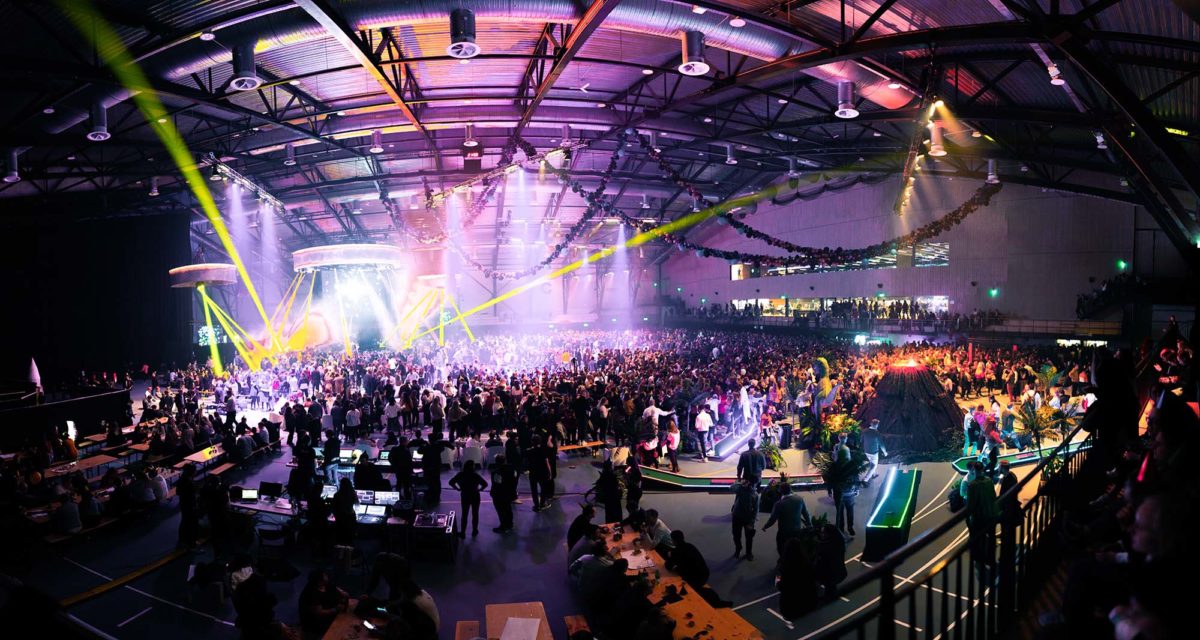Being able to prove a high ROI is often crucial for corporate events. It is important to be able to document that the investment delivers the results one is expecting to get. For event planners, this can be difficult, which is why we wrote this article for you.
Measuring ROI is very simple for events that aim to generate revenue through ticket sales. There it is about income minus costs. But what if your goal is not as tangible? Maybe you want to generate leads or attract new employees? Maybe it’s about increasing brand awareness or launching a new product? Then you must define specific goal with your event.
One can get easily confused trying to measure ROI for events. This has to do with the fact that event value and cost are often very subjective. The return can be income through ticket sales, but also network activity or social engagement. Surveys show that 60% of event planners do not measure ROI at their events, this can be a costly mistake. Measuring and defining value and cost helps you identify which elements really add value to an event and which elements are only costs and not necessary to achieve the goal. If you don‘t measure, you will end up shooting blind.
Define event goals
Measuring ROI always starts with defining what the goals for your event are. The goals can be as different as the methods for measuring the success of the event. For corporate events, goals such as increased brand awareness, increased sales revenue, engaging customers, building team / community spirit, increased employee loyalty, staff training, or product launches and trade fairs. Even something as intangible as a strengthening of team spirit can be measured with the right goals and KPIs. Start by making a list of everything you want to achieve, then you can set up a priority so that it becomes clear what should be your main goals.
Define KPIs
Once you have a clear idea of what you want to achieve with your event, it becomes easier to define KPIs that you want to focus on. All events will have their own important data points, but here is a list to help you get started:
- Traffic to your site
- Social media engagement
- Number of messages sent in app, social media or to your website
- New potential customers
- New sales
- Press coverage
- Social media check-ins
If you want to build brand awareness, you should measure things like the number of participants, the degree of press coverage and engagement in social media.
Examples of goals and how to measure success
Lead generation
A typical goal for a company can be to generate many qualified leads during an event. In such a case, the calculation of ROI is relatively straight forward. All the company’s potential customers must be stored in a CRM system with a “tag” for the lead origin, later you can trace customers back to a current event. After the event, you can assess the value of the collected leads, or you can measure how much sales revenue came out of the leads after the sellers have followed up. The return in such a case will be sales revenue from leads, divided by the event cost.
Employer branding
If your goal is increased employee loyalty the ROI calculation is more difficult. Not only because it is more difficult to define reasonable KPIs, but it is also often that this type of event generates long-term improvements in a company, and not always immediate and measurable results. Employer branding is about how the company is perceived in the eyes of the employees and refers to the values the company gives to its employees. It’s about much more than payroll, table tennis in the cafeteria and Christmas staff party. It’s about what drives the team spirit and what brings people together. Ensuring good employer branding motivates current employees and attracts the most best job seekers. Here are some examples of how you can measure such long-term goals:
- Turnover rate among employees
- Increased awareness leading to more qualified applicants
- Increased conversion rate on interesting applicants
- Decrease in the time to fill new positions
- Reduced costs for recruitment
- Measure the degree of cooperation and team spirit of the employees with surveys
- Measure loyalty and the sense of belonging to the community
- Compare employee satisfaction from year to year
Research shows that the best talents choose you and not the other way around. Forbes states that “Teambuilding is the best investment you will ever make” and “Teams with a high level of commitment earn twice as much as companies with a low level of commitment”. Therefore, it is important to work with events which strengthen your company’s attractiveness in the labour market.
Increased knowledge of your brand
Another popular goal for corporate events is increased brand awareness. In such cases goals might be:
- Maximizing event registrations
- High presence on social media and media coverage
- Increased traffic to your site
- Increased recognition of your brand and your products
Many of these KPIs can be measured in collaboration with your marketing department. If you made sure to have all the analysis tools in place, a market resource can easily retrieve data on website traffic, media coverage and presence in social media. To measure brand awareness, recognition, and knowledge, you can use surveys before, during and after the event.
Gather data
If your goal is to increase team spirit among participants, you can conduct opinion polls before and after the event. Ask participants to assess their group affiliation and see the differences before and after.
To measure success, you need data. Lots of data. You do not have to use everything, but it is a good practice to configure tracking of as many points as possible, because you never know what you might want to review and understand later. At the very least, you need to track and measure the data points associated with the KPIs.
Make sure you have linked your site to an analytics tool. Google Analytics is a good start. For social media, you should create a hashtag so you can monitor what people are saying about the event. Social engagement is a great indicator of interest!
Do you have your own event app? Use it for all it’s worth! Then you can gain insight into how participants register for sessions, or which features are the most useful. You can also use the app to send polls and polls, which gives you more insight than you can otherwise get.
Analyze and understand the data
All the data you collect will give a very good indication of the success of the event, but a deep dive into this data can give you a better understanding of what they mean and how they affect your return. If your goal was 1000 new followers on social media, but you ended up getting 1500, then you have exceeded your goal by 50%. From here, you can calculate how much each new follower cost you by dividing the event cost by the number of new followers.
Decide what is most important for you and your business. Based on this, you can share the costs in your budget with any revenue and other KPIs. Once you have decided which numbers you want to highlight, remember to tell a story about your event. A story that shows the hard work your team put into the event and that it paid off, and that this event is worth investing for the following years.
Through good work with your data, you will also be able to uncover various possibilities for improvement – they are always there. Would other topics or speakers serve your event better next time? Can your app be improved? How did the schedule go? Did the premises, staff and other facilities work? As long as you can find areas for improvement, you will be able to build on your successes and present a roadmap for greater returns in the future.



